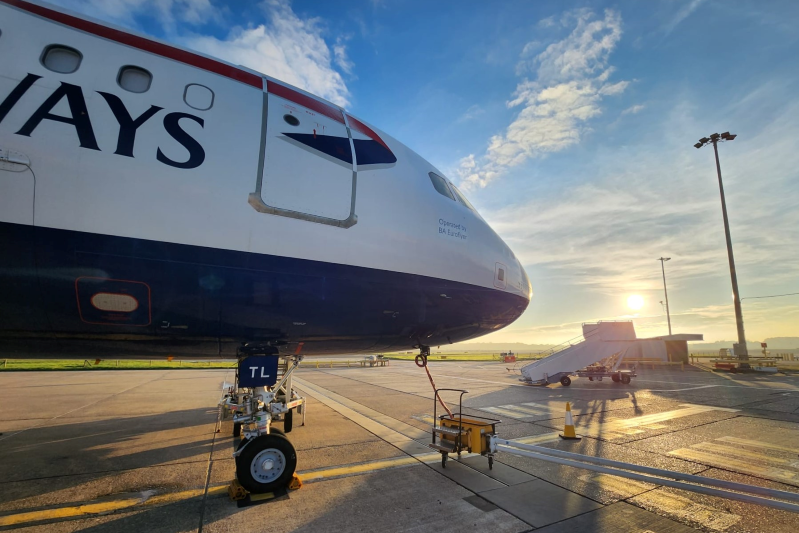
British Airways (BA) is seeking to expand its short-haul BA EuroFlyer operations from London Gatwick Airport (LGW) as it aims to win market share from easyJet.
The Oneworld alliance member currently has 18 aircraft based at the UK’s second-largest gateway, comprising 12 Airbus A320s and six A321s. BA CEO Sean Doyle said the carrier intends to increase its Gatwick-based fleet by a further eight aircraft.
“At Gatwick, EuroFlyer is up and running at a fairly significant scale,” Doyle said on an analysts’ call following the publication of parent International Airlines Group’s first-half financial results. “We have set up a separate airline operating certificate (AOC), and we’re operating 18 aircraft there to summer. Our plan would be to get that up to about 26.”
BA suspended service from Gatwick in April 2020 as the COVID-19 crisis deepened and initially warned that flights may not return. However, short-haul operations resumed in March 2022 under the new BA EuroFlyer unit using BA’s mainline AOC. BA EuroFlyer secured its own AOC in December 2022.
In order to aid its recovery from the pandemic, BA leased 118 of its weekly take-off and landing slots at Gatwick to its sister airline Vueling during the summer 2022 season and a further 230 to easyJet.
“We do have arrangements to take slots back from [airlines] we have leased them out to, particularly easyJet, over the coming years to enable [the expansion],” Doyle said. “That still leaves headroom and capacity for Vueling’s current operation, which again has increased and it’s performing very well.”
According to data provided by OAG Schedules Analyser, BA EuroFlyer has a 12.7% capacity share of seats from Gatwick during summer 2023, compared with easyJet’s 47.9%. Vueling is the third-largest carrier with 6.3% of capacity available. In summer 2019, easyJet had 40.6% of the market, BA had 17.1%, and Vueling had 3.7%.
For the week commencing July 24, BA EuroFlyer is serving 48 destinations from Gatwick, providing about 72,200 departure seats. This represents an increase of two destinations and some 13,000 weekly seats compared with this time last year.
Earlier in July, Gatwick submitted plans for a £2.2 billion ($2.8 billion) second runway as the airport looks to double passenger numbers to 75 million a year by the end of the next decade. The Northern Runway project involves bringing a standby runway into use for departing flights alongside the existing main runway. The move would enable the number of annual flights to increase from 285,000 to 386,000, with the main runway used for arrivals and departures of all aircraft and the Northern Runway able to handle the departures of smaller narrowbody aircraft.
“There are a few considerations that will come into play—one will be cost, and I think Gatwick is making a pitch that it is a very cost-efficient form of airport expansion,” Doyle said. “Secondly, the wider community impact [will be a factor] but that looks very manageable in terms of the noise envelope. We’ll evaluate the plans closely because Gatwick is a very important gateway for us. [The second runway] is a case I’m not surprised they have made, and it could give us opportunities in the future.”





